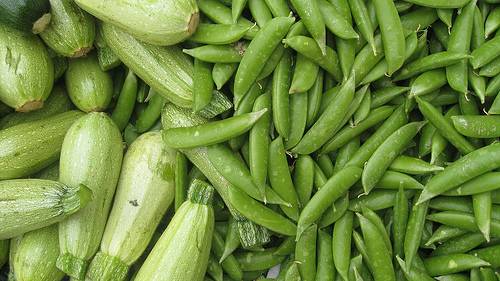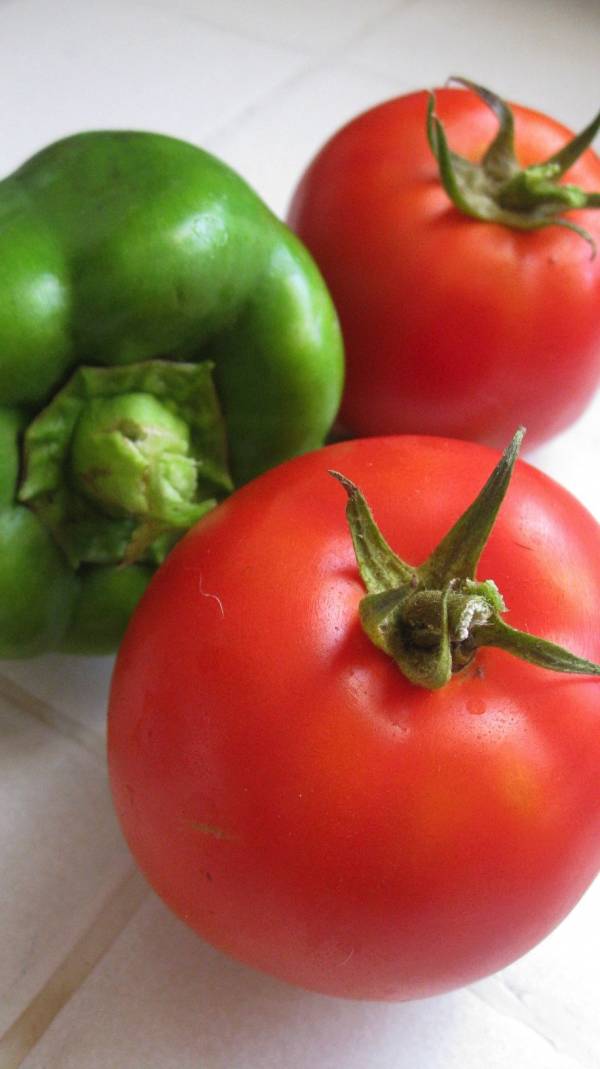Photos provided by Danette “Dizzle” Rivera and Just Food.
About a year ago, a friend of mine and I visited the Hollywood Farmers Market. I meandered around buying produce that caught my eye while she bee lined to a specific location and picked up a cardboard box. Busting out of the box were collard leaves and cilantro. Nestled below were radishes, heirloom tomatoes, and much more. “What, did you custom order your produce?” I asked her. “Kind of,” she said. “It’s my CSA. Every week I get whatever’s in season from a local farmer.” I marveled at the box. “Like a fresh box of surprise every week?” I asked. She laughed. “I guess you could look at it that way,” she said.
The community supported agriculture (CSA) concept originated in the 1960s in Switzerland, Germany, and Japan, where consumers interested in safe food and farmers seeking stable markets for their crops joined together in economic partnerships. In the mid 1980s, CSAs caught on in the United States. Since, CSAs have become an increasingly popular way for consumers to buy local, seasonal food directly from a farmer.
The way a CSA works is that a farmer offers a certain number of “shares” to the public. Typically the share consists of a box of vegetables, but for a few extra dollars a week in addition to your vegetables, you can often add fruit, eggs, meat, and even flowers to your order. Interested consumers purchase a share, often called a membership, and in turn they pick up a box of seasonal produce usually once a week throughout the farming season at a local pick up point, often at a farmer’s market. There are different ways of paying that vary with each farm.
This arrangement creates several benefits for both the farmer and the consumer:
Advantages for farmers:
- Receive payment early in the season, which helps a farmer plan for the season, purchase new seeds, make equipment repairs, and manage cash flow.
- Spend time marketing food early in the year, before long days in the field begin.
- Have an opportunity to get to know the people who eat the food they grow.
- Increase their demand. We don’t want fresh, delicious food to go away!
Advantages for consumers:
- Eat ultra-fresh food, with all the flavor and vitamin benefits.
- Get exposed to new vegetables.
- Find that kids typically favor food from “their” farm – even veggies they’ve never been known to eat.
- Develop a relationship with the farmer who grows the food and learn more about how food is grown.
- Become an important component of a communal cycle that drives the quality of our food. This gives fresh food a viable voice.
It’s a simple enough idea, but its impact has been profound. Tens of thousands of families across the country now have joined CSAs. Not only is the public increasingly enjoying fresh, local food with this direct access to the farm, but the new demand for CSAs has benefited local economies and saved many small farms. Just as it seemed that big, factory farms were steam rolling small farmers into obliteration, CSAs and farmers markets, through a grassroots push and gradual growth in popularity, have brought small farmers not just back to life, but into the  spotlight. Consumers interested in where their food comes from are now more able to differentiate local sources from factory farm sources. The number of savvy consumers is constantly increasing because they taste the difference, and this can only help local farmers and in turn help the quality and variety of food they’ll be able to grow.
spotlight. Consumers interested in where their food comes from are now more able to differentiate local sources from factory farm sources. The number of savvy consumers is constantly increasing because they taste the difference, and this can only help local farmers and in turn help the quality and variety of food they’ll be able to grow.
CSAs aren’t confined to produce. Some farmers include the option for shareholders to buy shares of eggs, homemade bread, meat, cheese, fruit, flowers, or other farm products along with their veggies. Sometimes several farmers will offer their products together, to offer the widest variety to their members. For example, a produce farmer might create a partnership with a neighbor to deliver chickens to the CSA drop off point, so the CSA members can purchase farm-fresh chickens when they come to get their CSA baskets.
There is an important concept woven into the CSA model that takes the arrangement beyond the usual commercial transaction. That is the idea of shared risk. The very original concept of a CSA was when a group of people pooled their money, bought a farm, hired a farmer, and each took a share of whatever the farm produced for the year. If the farm had an abundance of tomatoes, everyone put some up for winter. If a plague of locusts ate all the greens, members were out of luck. Very few such CSAs exist today, and for most farmers, the CSA is just one of the ways their produce is marketed. They may also sell to farmer’s markets and restaurants to cut down the risk that a CSA consumer would share. Still, the idea that “we’re in this together” remains. Some farms are stronger than others, and CSA members may be asked to sign a policy form indicating that they agree to accept without complaint whatever the farm can produce.
 Most CSA farmers feel a great sense of responsibility to their members, and when certain crops are scarce, they make sure the CSAs get served first. Things can go wrong on a farm – like with any business – and when the expected is not delivered, members can feel shortchanged. This is a foreign concept to today’s consumer in that we expect perfection from what we buy. We work hard for our money so this is understandable for the most part, but this idea of produce perfection has also lead to less than natural practices that are potentially detrimental to our health, such as increased chemical sprays and the development of genetically-modified food (GMO).
Most CSA farmers feel a great sense of responsibility to their members, and when certain crops are scarce, they make sure the CSAs get served first. Things can go wrong on a farm – like with any business – and when the expected is not delivered, members can feel shortchanged. This is a foreign concept to today’s consumer in that we expect perfection from what we buy. We work hard for our money so this is understandable for the most part, but this idea of produce perfection has also lead to less than natural practices that are potentially detrimental to our health, such as increased chemical sprays and the development of genetically-modified food (GMO).
If we buy into the concept of being part of or a member of our local, real agriculture, then we also are committed to the concept beyond the idea of it being charming. Real crops sometimes have issue and it’s best to take a long view when investing in a CSA. If the potential for “not getting your money’s worth” one hundred percent of the time makes you anxious, then shared risk may not be for you and shopping at the farmer’s market might be best. Also, if the idea that your box of produce is at the farmer’s discretion bothers you, a CSA might not be for you either.
All in all though, investing in CSAs is a great way to directly be part of the local economy and the livelihood of local farmers. CSAs also insure you receive the freshest and most in-season produce available, which is always most delicious.
What now? Check out LocalHarvest. They are an amazing online resource for local food. They have the most comprehensive directory of CSA farms, with over 4,000 listed. You can easily search for CSAs as well as local farms and farmers market’s near you or when traveling. There may be food that comes with your CSA that you haven’t cooked with before. This is a great way to experiment and there are plenty of online resources for CSA box recipes.
Do you buy produce through a CSA? What has your experience been?






